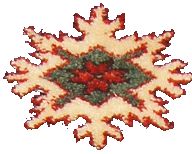
|
|
A fine Shahnazarli rug
CODE: KUSHAH20 Size (metric): 83x135cm Size (ft): 2'8"x4'5" Area: 1.12 m2 Density: 170 000 knots per square meter, totally ~200 000 knots Weaving period: two and half months Colors: madder red, Persian blue, navy blue, light sky blue, light golden yellow, antique ruby, green, natural ivory, natural brown. Dyes: 100% natural dyes: madder, weld (Reseda Luteola), indigo, pomegranate skins, walnut husks, natural brown sheep wool, natural ivory sheep wool - all are eco-friendly and non-toxic Materials: Handcarded and handspun wool for pile, wool warps and cotton wefts Handwoven in Azerbaijan Design: Sky blue and madder red and golden yellow hexagon medallions are outlined in white against an indigo blue field holding pairs of ivory grape leaves, botehs, stars, hooked devices, small plant and animal forms; in an ivory polychrome crab-rosette border between "S" motif minor borders. As most examples of this group the rug also include serrated lozenges (flames) above and below the main hexagons. |
|
Contact us for more information about this rug
 Grape Leaf |
 |
| Apple |
![]()
"S" motif is symbolizing a dragon
- the masculine or heavenly principle of life.
He is the guard of treasures and secret objects as well as the tree of life.
|
Shabran ruins The ruins of an ancient city can still be seen near the village of Shahnazarli. Archaeological digs on both banks of the River Shabran in 1979-89 revealed the ruins of a town of the same name, which covered 450 square kilometres. This was a town founded on the Great Silk Road in the 6th century AD by Sassanid Shah Khosrov Anushiravan (Khusrau I the Just (531-579)). In the 7th century the town was taken by the Arabs and in the 9th-10th centuries was one of the region’s major administrative, commercial and cultural centres. In the 10th-11th centuries Shabran was one of the political centres of the Shirvan Shah state. It was home to the prisons and family tombs of the Shirvan Shah rulers. According to written sources, Shirvansah Ibrahim held a great feast in Shabran in honour of Tamerlane who had defeated Khan Tokhtamysh of the Golden Horde. Attacks by the Mongols caused great damage to the economy of Shabran and during the decline of the Safavid state only a small village remained of the town. In the early 18th century Shabran was razed to the ground during internecine warfare and left in ruins. Shabran was a multi-ethnic town. There were Christians and Jews here alongside the main residents, Muslims. The local people produced ceramics. Archaeologists found parts of a sewage system under the ruins of the old city. The 9th century covered sewage system of stone and brick allowed waste water to be sent straight to the river. The first street in Azerbaijan was found in Shabran. The clay ovens of the bakers’ district survive to this day. Coins found during excavations show that copper working, jewellery making and arms manufacture were developed in this town in the Middle Ages. There are several theories about the etymology of the name Shabran. According to one theory, the town’s name divides into two parts: “shab” which is “night” and “ran” which is place or area. This means that Shabran was a place where caravans spent the night because of its location at the intersection of water and land routes. Another theory says that the word Shabran is also Sabiran, meaning the country of the Sabirs and the town was named in honour of the Hun tribe of the Sabirs (5th century AD). The latter opinion sounds more plausible. There is now a museum and reserve at the site.
|
|
|
|


|
For more information about the above rug or to place an order please email vd@azerbaijanrugs.com (Baku, Azerbaijan) or ra@azerbaijanrugs.com (San Francisco Bay Area). We will get back to you within 24 hours or less. |